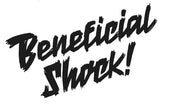Taiwanese born, London-based freelance illustrator Poan Pan is known for his whimsical illustrations that incorporate a tactile graphic approach (akin to felt art) in service of mature creative thinking. Using a soft palette to create an array of structuralist compositions, his work celebrates the movement and warmth of humanity, capturing the essence of awkwardness and quirkiness in everyday life.
Here Poan shares his creative process, inspiration and lays out the importance of planning in order to sustain a lasting practice.
Could you define the approach or philosophy of your work Poan?
Even with self-initiated projects, I start with thorough research as a strong foundation to express my message. The physical engagement of drawing in a sketchbook with a pencil has always been my sweet spot for triggering project ideas. Often, it takes some time to digest the information and then translate it into an illustration. During the journey of a project, my daily sketchbook, filled with a variety of postures, becomes my dictionary while I’m experimenting with potential ideas. One of the key lessons I’ve learned in the past two and a half years is to go with the flow of creativity and be flexible instead of pushing myself too hard. For me, brainstorming is like growing plants—it takes time to flourish and can’t be rushed.

'For me, brainstorming is like growing plants—it takes time to flourish and can’t be rushed.'
Which piece of work or project have you learned the most from?
Most of the time, the lessons I learn happen during the adventure of my self-initiated projects. A recent example is an illustration about bird watching I did earlier this year. In my everyday life, I collect and research diverse elements that I find interesting, and often this knowledge becomes my creative nutrition. By mixing this with the freedom of experimenting, I explore how to capture three-dimensional perspectives by adding shadows and small twists. These simple changes unlock the potential for how my characters interact with their surroundings.
How important is research to your work and why does research matter to you?
Research is as important as creating. Without the solid fundamentals of research, the work can just be another visually pleasing image. With the magic of research, layers of messages and meanings are applied to the illustrations, inviting audiences to engage more deeply.

Which illustrator(s) alive or dead do you most admire and why?
My inspiration since I started working as a designer/illustrator is Geoff McFetridge, a Canadian artist, designer, illustrator, sculptor, and creative director. At first, I was attracted by his works, but gradually, the more I researched his philosophy of creating, the more I realised the importance of being open to possibilities. Not limiting myself can introduce me to a variety of opportunities and unexpected adventures.
What is the most challenging aspect for you of being a ‘jobbing’ illustrator?
Working as an illustrator/designer is actually enjoyable because I love design, art, and what I’m doing. For me, the most challenging aspect is freelancing, and more precisely, handling the pressure of ups and downs. It’s like riding a rollercoaster with an even more dramatic climax and bottom. In the past few months, I’ve worked on 3-4 projects at the same time, and then suddenly, the dry season comes. I feel like it will be a non-stop learning journey.

Who would be your ideal client to work for and why?
Creating the visual identity for a jazz music festival would be one of my dream clients. The elegance and excitement that co-exist within jazz music would be a perfect match with the motion and movement of my illustrations.
What do you think defines ‘good illustration’?
This is an interesting question. Besides the technical aspects like composition or the use of colour, I don’t have a strict definition of good illustration. However, an illustration that communicates a thoughtful message—whether it’s a political opinion or a sense of humour—usually catches my eye, and I believe it will resonate with the audience.

'Surrendering to laziness once led to a backfire where I had to squeeze everything in right before the deadline. After that, I became a believer in scheduling and executing every project with a well-thought-out plan.'
What is one part of your working process that you do well, something you could improve, and something you wish you never had to do again?
Taking a walk in nature, like a park, forest, or field, while feeling stuck has been one of my favourite working processes because it reminds me to step back and relax. This also ties into the previous question about the most challenging aspect. It’s more than just having ups and downs in working as a freelance illustrator; it’s about learning how to surf the waves. Surrendering to laziness once led to a backfire where I had to squeeze everything in right before the deadline. After that, I became a believer in scheduling and executing every project with a well-thought-out plan.

What film do you recommend to others most often and why?
That Day, on the Beach, directed by Edward Yang (1983). Being Taiwanese, I believe it captures the best time and beauty of Taiwan. Also, some details in the film have been a great reference and inspiration for my illustrations.
What was the last film that made you cry and why (if you're happy to tell us) did it have such an impact on you?
About Time (Richard Curtis, 2013) would be the choice without hesitation. The beauty of the relationships—not only the romance but also the family dynamics—is the reason I love this film, and it moves me to tears no matter how many times I watch it.
Poan has illustrated the article 'The Tiles That Bind: Mahjong, Meetings and The Movies. A Cultural Cornerstone of Asian Community' for the Fun and Games Issue, out in October.


